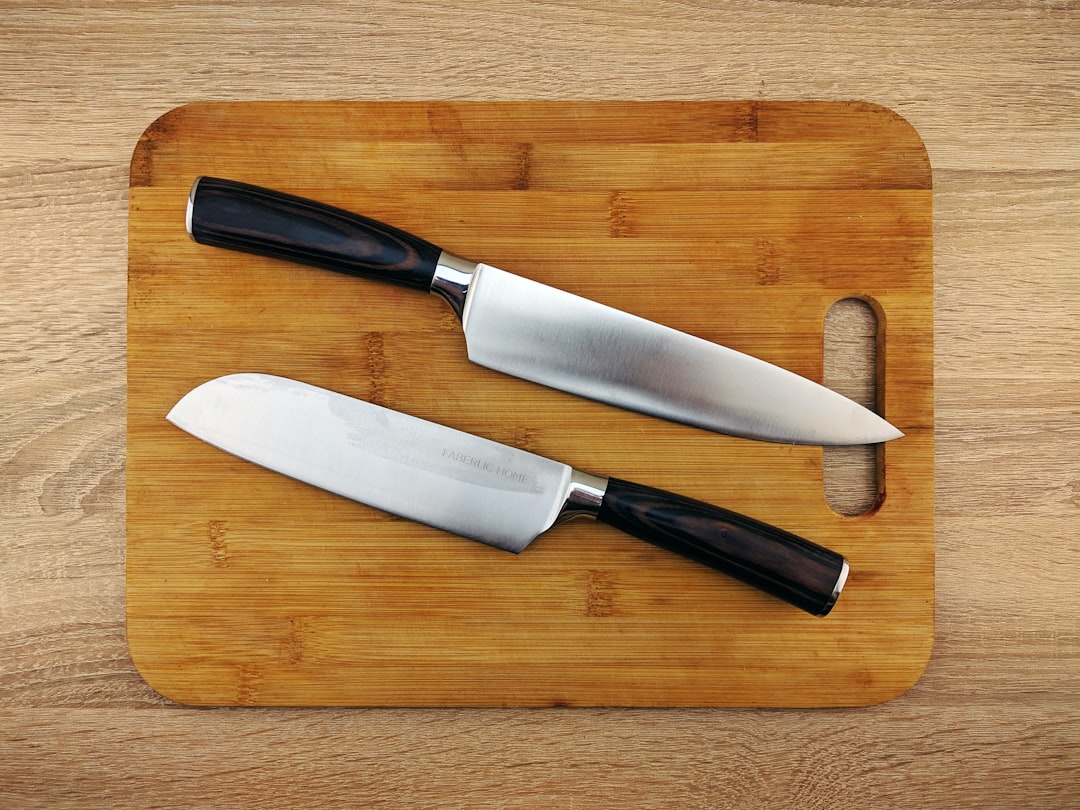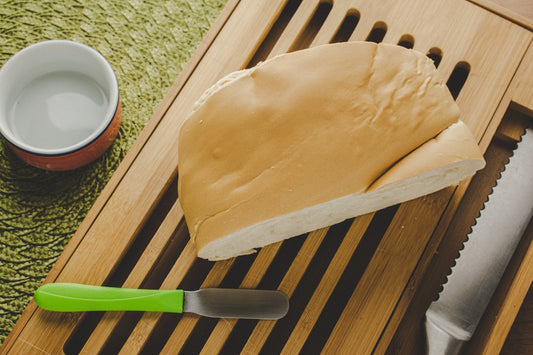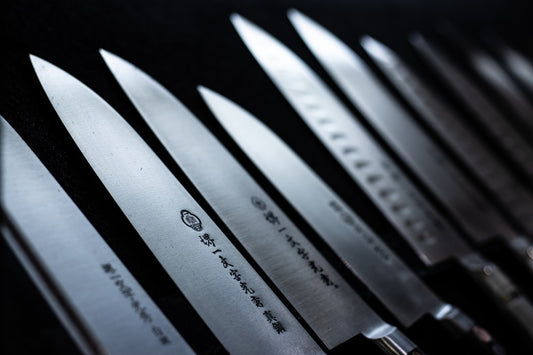
Share
What Is a Nakiri Knife? Understanding Different Types of Japanese Chef Knives
Estimated reading time: 10 minutes
Key Takeaways
- Understand the unique features and uses of the Nakiri knife.
- Learn the differences between various Japanese chef knife types.
- Discover how to choose the best Japanese utility knife for your needs.
- Explore tips for using and mastering Japanese knives in the kitchen.
Table of Contents
- Introduction
- Japanese Chef Knife Types: An Essential Overview
- What Is a Nakiri Knife? A Vegetable Specialist
- Gyuto vs Santoku Differences: Versatile Kitchen Workhorses
- Petty Knife Uses: The Best Japanese Utility Knife for Detail
- Sujihiki Slicing Knife: Presentation-Perfect Slices
- Deba Knife for Fish: Heavy-Duty Precision
- Kiritsuke Knife Overview: The Executive Chef’s Choice
- Best Japanese Utility Knife: Choosing the Right One
- Conclusion: The Power of Japanese Chef Knife Types
- Where to Buy and How to Join the Conversation
Japanese knives are known for their exceptional craftsmanship, precision, and unique ability to elevate the culinary experience. These aren’t just kitchen tools; they are steeped in tradition, representing centuries of artistry that’s respected around the globe. That’s why chefs and home cooks alike admire Japanese chef knife types for their beauty and sheer performance.
One question that often comes up is "What is a Nakiri knife?" The Nakiri is a highly specialized Japanese vegetable knife, prized for making clean, consistent cuts in produce. Understanding the Nakiri opens the door to a wide world of Japanese chef knife types, each with its distinct shape and use. Learn more about choosing the perfect blade.
This blog post breaks down the different varieties of Japanese chef knives. It will detail the differences, specific uses, and the reasons for choosing one knife over another—helping you make the best choice for your kitchen.
Japanese Chef Knife Types: An Essential Overview
Japanese knives are easy to pick out from a lineup. Their thin, sharp blades and distinctive profiles are designed for specific culinary purposes. Compared to Western knives, Japanese knives are engineered for precise and specialized kitchen tasks. This makes selecting the right Japanese chef knife type much more important for safety and efficiency than with more generic European styles.
Here are the main Japanese chef knife types you should know about:
- Gyuto (Japanese chef’s knife): The workhorse of the Japanese kitchen, versatile and suitable for cutting meat, fish, and vegetables. Learn more about the Gyuto knife.
- Santoku (all-purpose knife): Great for slicing, dicing, and chopping—a favorite for home cooks who want one knife to do most tasks.
- Nakiri (vegetable knife): Straight, rectangular blade designed to maximize efficiency and uniformity when cutting vegetables.
- Petty (utility/paring knife): Small, nimble knife for tasks like peeling, trimming, and other detail work.
- Sujihiki (slicing knife): Long and slender blade, made for slicing cooked or raw meats and fish into thin, even pieces.
- Deba (fish filleting knife): Thick, heavy blade built to cut through fish bones and cartilage with ease. Read about the Deba knife.
- Kiritsuke (dual-purpose knife): Blends features of vegetable and slicing knives, suitable for advanced users.
- Bunka (all-purpose alternative): Distinctive pointed tip and straight edge make it very adaptable for detailed work and diverse prep.
Each knife is designed for specific ingredients or tasks. In the next sections, we’ll take a closer look at what makes every one of these Japanese chef knife types special.
What Is a Nakiri Knife? A Vegetable Specialist
A Nakiri knife is easily recognizable thanks to its straight, flat, and rectangular blade. This Japanese vegetable knife is built for one purpose: delivering unbeatable results in vegetable preparation. Its full-flat edge allows you to make precise, straight-down push cuts—no rocking required. That means everything from carrots to cucumbers gets cut cleanly and evenly in one pass.
Main Features of a Nakiri Knife
- Blade: Straight-edged and rectangular, about 165mm–180mm in length.
- Profile: Thin blade and flat edge glide smoothly through soft and hard vegetables alike.
- Performance: Great for slicing, dicing, and mincing vegetables, herbs, and fruits, all while preserving the cell structure and freshness.
How Does the Nakiri Compare to Other Knives?
While the Santoku knife is also multipurpose and capable of working with vegetables, the Nakiri’s design makes it superior for processing large amounts of vegetables quickly and with maximum consistency. The Santoku’s slight curve is better for a gentle rocking motion, but the Nakiri’s completely flat edge ensures perfect, uniform pieces every time.
Using a Nakiri Knife—Top Tips
- Use a push-cut technique—move the knife up and down in a straight path without rocking.
- Let the blade do the work; don’t press too hard.
- Practice maintaining a straight motion to maximize the benefit of the edge. Learn how to sharpen Japanese knives.
Understanding what is a Nakiri knife and how it contributes to Japanese chef knife types unlocks the potential for cleaner, healthier, and more beautiful vegetable dishes.
Gyuto vs Santoku Differences: Versatile Kitchen Workhorses
When talking about Japanese chef knife types, the Gyuto and Santoku are among the most popular and versatile options. Let’s break down their unique characteristics.
Gyuto: The Japanese Chef’s Knife
The Gyuto knife is the Japanese answer to the classic Western chef’s knife. It features a long, slender blade with a gentle curve, generally ranging from 210mm to 270mm. That curve is not just for aesthetics—it’s fantastic for smooth rocking and push-pull cutting motions, making it perfect for slicing meat, fish, and even large vegetables.
Santoku: The Three-Virtues Knife
The Santoku (meaning "three virtues") is slightly more compact, with a shorter, wider blade that’s flatter along the edge (typically 165mm–180mm). It’s built so you can slice, dice, and chop with ease—making it ideal for home kitchens and anyone limited by space or simply wanting a lighter, nimbler knife.
Comparing Gyuto vs Santoku Differences
Here’s a direct comparison:
| Feature | Gyuto | Santoku |
|---|---|---|
| Blade Shape | Long, slender, slight curve | Shorter, wider, flatter profile |
| Typical Length | 210–270mm | 165–180mm |
| Use | Versatile: meat, fish, vegetables | All-purpose: slicing, dicing, chopping |
| Cutting Motion | Rocking and push-pull | Straight and light rocking |
| Preferred When | Versatility, larger items, pro use | Home cooking, compact spaces, vegetables |
Choosing: Gyuto or Santoku?
- Choose the Gyuto when you need one knife for many jobs and often work with large ingredients or meat—especially preferred by professionals.
- Choose the Santoku if you value lightweight handling, focus on vegetables, have a smaller prep area, or do a lot of straight-down slicing at home.
These two knife styles might look similar, but their details set them apart within the collection of Japanese chef knife types—pick the one that suits your kitchen tasks best.
Petty Knife Uses: The Best Japanese Utility Knife for Detail
Among Japanese chef knife types, the Petty knife stands out for its agility in handling precise or tiny kitchen jobs. Sometimes called the best Japanese utility knife, it’s essentially the Japanese answer to the Western paring or utility knife—but lighter and sharper. Improve your knife skills.
What Is a Petty Knife?
- Size: Small, usually 120mm–150mm in length.
- Design: Slim, pointed blade for excellent maneuverability.
- Tasks: Perfect for peeling, trimming, deveining, and other tasks needing unwavering control.
Common Petty Knife Uses
- Peeling apples or potatoes
- Segmenting citrus
- Trimming small produce or herbs
- Deveining shrimp or removing seeds
- Making garnishes and other decorative cuts
Why Is It Better Than a Western Paring Knife?
Japanese Petty knives are sharper and lighter, allowing for more precise, delicate work. The edge geometry provides cleaner results, which is especially useful for intricate or decorative jobs.
Tips for Using a Petty Knife
- Use a comfortable pinch grip for stability.
- Make short, controlled cuts.
- Use the tip for small entry cuts, especially with fruits or for fine detail.
For anyone seeking the best Japanese utility knife, the Petty knife covers all small-scale culinary tasks with confidence and finesse.
Sujihiki Slicing Knife: Presentation-Perfect Slices
The Sujihiki slicing knife is another essential in the list of Japanese chef knife types. This elegant, elongated knife is crafted specifically for making thin, even slices of meat and fish—vital for appetizing presentations and effortless serving.
What Sets the Sujihiki Apart?
- Blade Length: Generally ranges from 240mm to 300mm.
- Design: Long, narrow profile with a thin grind minimizes tearing and drag.
- Edge: Exceptionally sharp, supporting smooth, single-motion slicing.
Main Sujihiki Slicing Knife Uses
- Slicing cooked or raw beef, pork, or poultry
- Carving roasts and hams
- Preparing sushi and sashimi by slicing raw fish into delicate strips
Sujihiki vs Western Slicer
Compared to Western slicers, the Sujihiki offers a keener, thinner edge and creates less resistance as it glides through cooked or raw protein. That means less damage to the food and more beautiful, consistent slices.
Top Tips for Sujihiki Knife Mastery
- Always use long, single pulls through the meat for even pieces.
- Maintain a consistent angle to keep the blade sharp over time.
- Wipe the blade between slices to keep food from sticking.
The Sujihiki slicing knife is ideal for anyone wanting to present restaurant-quality dishes with flawless, smooth slices.
Deba Knife for Fish: Heavy-Duty Precision
A Deba knife is indispensable when it comes to filleting and breaking down whole fish—an essential skill in Japanese cuisine and an important element in the range of Japanese chef knife types.
Key Features of the Deba Knife
- Thickness: Heavy, thick blade with impressive weight.
- Edge: Single-bevel for precision work.
- Durability: Handles both delicate filleting and tough tasks like cutting through fish heads and small bones. Read more about professional Japanese knives.
Deba Knife for Fish—Primary Uses
- Breaking down whole fish of various sizes
- Removing fish heads and tails
- Cutting through cartilage and small bones
- Cleaning and portioning fish fillets with minimal waste
How to Use a Deba Safely and Effectively
- Use the heel of the blade for rougher jobs—splitting heads, cutting through spines.
- Use the tip for delicate work, such as trimming around bones or removing skin.
- Always cut slowly and with controlled movements, as the weight and single-bevel require respect.
For anyone serious about seafood prep, the Deba knife for fish is an investment that pays off in accuracy and efficiency.
Kiritsuke Knife Overview: The Executive Chef’s Choice
The Kiritsuke knife is a status symbol in Japanese kitchens and holds a key spot among Japanese chef knife types. It features a long, flat blade with a unique angled tip (k-tip), making it stand out visually and functionally.
What Makes the Kiritsuke Unique?
- Design Origins: Combines aspects of the Yanagiba (slicing sushi and sashimi) and Usuba (vegetable knife).
- Blade: Typically longer and straighter, with a pointed k-tip for intricate work.
- Edge: Usually single-beveled for razor-sharp performance.
Kiritsuke Knife Overview—Best Uses
- Slicing raw and cooked fish for sushi, sashimi, or carpaccio
- Precision work on hard vegetables
- Cutting long, straight slices in a single stroke
Skill Level Required
The Kiritsuke is traditionally reserved for executive chefs. Its flat blade and angled tip require advanced technique and control, making it less suitable for beginners. Handling this knife skillfully is a mark of experience and expertise.
Tips for Mastering the Kiritsuke
- Practice handling the blade’s length and balance before using it on food.
- Start with slow, straight cuts, focusing on maintaining the correct angle.
- If new to single-bevel knives, work alongside someone experienced or practice with less expensive models.
If you’re pursuing greater skills in Japanese cooking, the Kiritsuke knife overview highlights a tool that’s both versatile and a true showcase of mastery.
Best Japanese Utility Knife: Choosing the Right One
Japanese utility knives—mainly the Petty and the Bunka—are must-haves for cooks who want complete versatility in a single compact tool. Selecting the best Japanese utility knife depends on your daily kitchen needs.
Petty Knife: For Detail and Precision
- Ideal for: Peeling, trimming, and intricate work with fruits and vegetables.
- Benefits: Lightweight, agile, sharp. Excellent for any task too detailed for a chef’s knife.
- Typical Size: 120mm–150mm.
Bunka Knife: The All-Around Performer
- Blade Design: Sharply pointed tip for nimble, detailed work.
- Edge: Flat, making it effective for push-cutting vegetables and mincing herbs.
- Great for: General prep, slicing proteins, and all-purpose use.
Key Considerations When Choosing Your Utility Knife
- Handle Comfort: Test grip for comfort and security—especially with wet hands.
- Blade Material: High-carbon steel provides edge retention and sharpness; stainless steel offers easier maintenance.
- Length & Balance: Match the knife’s size to your hand and the tasks you do most.
- Task Frequency: If you mainly do small, precise work, pick a Petty. If you want broader versatility, choose a Bunka.
Selecting the best Japanese utility knife ensures you have a kitchen companion that adapts effortlessly to your cooking style. For those focused on detail, the Petty knife uses cover all the bases.
Conclusion: The Power of Japanese Chef Knife Types
Each Japanese knife—Nakiri, Gyuto, Santoku, Petty, Sujihiki, Deba, Kiritsuke, and Bunka—serves a unique purpose and brings out the best in specific culinary techniques. Mastering the right knife for the right job is not just about tradition; it is a direct path to improved efficiency, precision, and safety in the kitchen.
Whether you cook at home daily or pursue culinary arts professionally, investing in the proper Japanese chef knife types can completely transform your preparation methods. Their tailored designs and sharpness save time, reduce fatigue, and ensure every slice, dice, and chop is as clean as it is beautiful.
Don’t hesitate to experiment and try out the various Japanese knives on your table. You’ll discover new methods and perhaps even a favorite tool you’ll use for years to come.
Where to Buy and How to Join the Conversation
When you’re ready to add genuine quality to your kitchen, choose your Japanese knives from specialty retailers or trusted online stores. This ensures authenticity, craftsmanship, and long-term value. Avoid generic or imitation models, as the true experience of Japanese chef knife types lies in expert manufacturing and proper materials.
Now it’s your turn! Have you used any Japanese knives? What’s your favorite Japanese knife and why? Share your stories in the comments below—whether you love the Nakiri for vegetables, the Sujihiki for slicing, or another style altogether.
Elevate every meal. Start your journey with Japanese chef knife types today.


